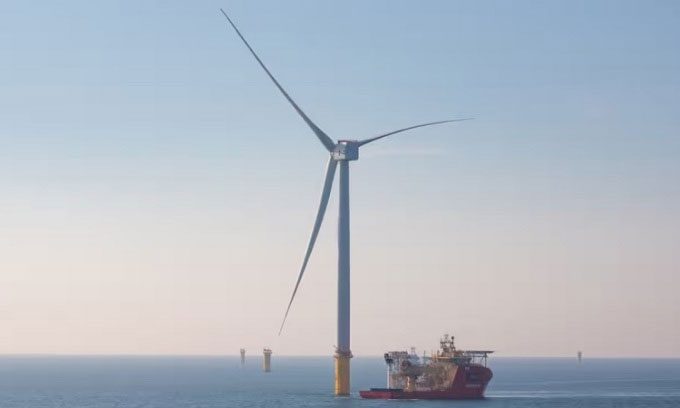The first turbine of the 277 turbines at the Dogger Bank wind farm has become operational, marking a significant milestone towards generating electricity for 6 million households annually.

A wind turbine at the Dogger Bank wind farm in the North Sea. (Photo: Dogger Bank)
The first wind turbine in the world’s largest offshore wind farm project in the North Sea has started supplying power to households and businesses in the UK, according to the Guardian. The developer confirmed on October 9 that the Dogger Bank wind farm, located 130 kilometers off the Yorkshire coast, began generating electricity from the start of October when the first of 277 turbines connected to the grid.
The Dogger Bank project is a joint development by the UK’s SSE company, along with Norway’s Equinor and Vårgrønn, and will produce 3.6 gigawatts of electricity, enough to power 6 million households annually when completed in 2026. UK Prime Minister Rishi Sunak stated that the project plays a crucial role in efficiently generating renewable energy. He noted that the $11 billion Dogger Bank farm not only enhances energy security for the UK but also creates jobs, reduces electricity bills, and helps the country pursue its goal of zero carbon emissions.
Developers indicated that each rotation of the 107-meter-long blades on the first turbine at Dogger Bank can generate enough electricity to supply a typical household in the UK for two days. Last year, SSE also launched another large-scale project, the Seagreen offshore wind farm, which is the largest in Scotland.
The prices of electricity and gas have skyrocketed over the past two years, partly due to the Russia-Ukraine conflict, raising significant concerns about the UK’s domestic energy system. The UK government aims to eliminate carbon emissions from the electricity system by 2035. However, they face major challenges in achieving this goal within a market currently reliant on fossil fuel-based electricity generation.


















































